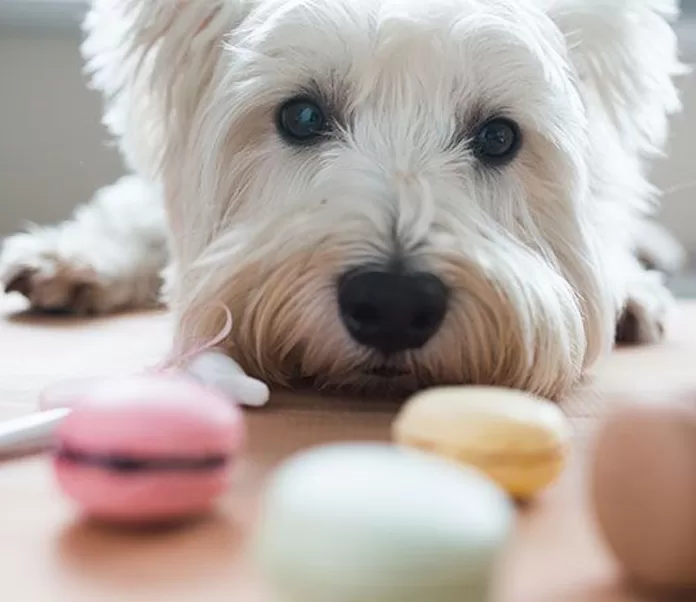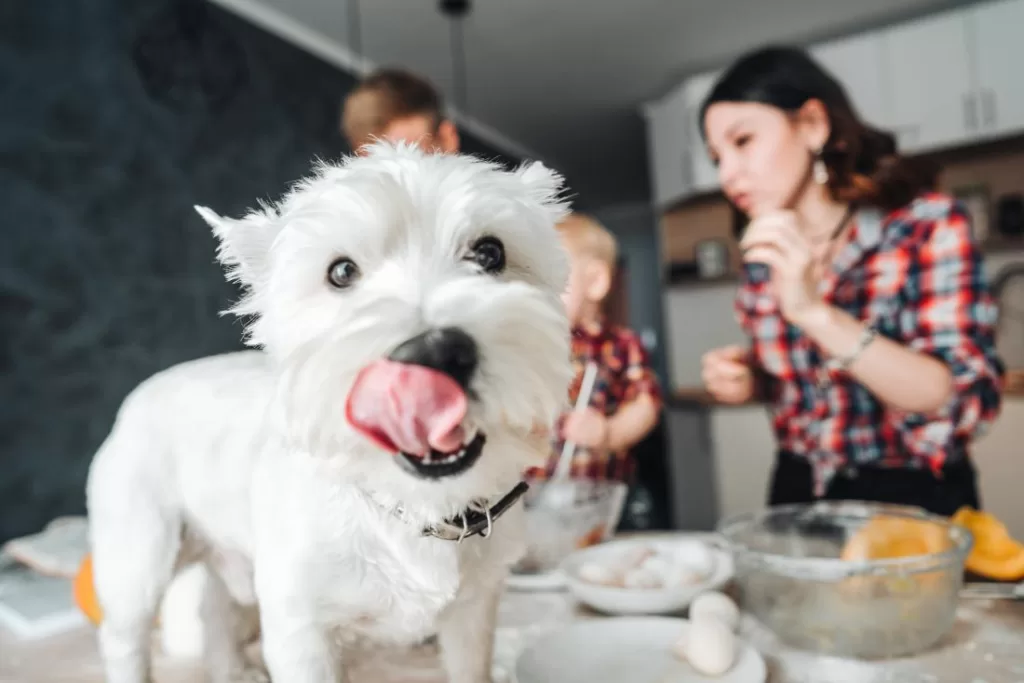Why is my dog not eating his food but Eating human food? You’re not the only pet owner who has discovered that your cherished animal companion is snubbing their usual dog food but salivating at a glance of your own meals. This perplexing tendency in canine companions has been seen by many dog owners.
Table of Contents
5 Reasons Why a dog is not eating his food but Showing Interest in human food

We’ll explore some of the potential causes of your dog’s potential food refusal as well as curiosity about human-made foods in this post.
Knowing these underlying causes will make it easier for you to deal with the problem and make sure your animal friend gets the nutrition they require.
Taste and Variety
Dogs, like people, can become weary when they consume the same thing every day. Your dog might just be hankering for some variation if they’ve been consuming the exact same brand or taste of dog food for a while. Food for humans frequently has a broader variety of flavors and textures, which appeals to them more. We’ll look at strategies for varying your dog’s diet while endangering their well-being.
Palatability
Despite being designed to give dogs a balanced diet, commercial dog foods sometimes don’t taste as good as human food. Your dog’s delicate palette may prefer certain flavors and substances in human food. We’ll go over suggestions for enhancing the flavor of your dog’s food so they’ll be excited to eat their own meals.
Begging Behavior and Reinforcement
Behavior and Reinforcement of Begging: If your dog has previously been successful in getting human food by pleading or displaying curiosity, they may have discovered that this behavior results in a reward. Dogs are fast to link activities to satisfying results, and getting a good treat off your plate only serves to increase their appetite for human food. We’ll offer pointers on how to curb begging and create better mealtime practices.
Also Read: 10 Tips for Leaving Dogs on a Terrace Safely
Health Concerns
A decrease of appetite in pets can be a sign of a deeper medical issue. It’s critical that you rule out any health problems that could be affecting your dog’s lack of interest in eating. We’ll look at some health problems that can impact a dog’s appetite as well as when it’s time to see a vet.
Feeding setting and schedule
Your dog’s appetite can be influenced by the setting in which they eat as well as the regularity of their feeding schedule. We’ll talk about how stress, distractions, and uneven meal times may all affect your dog’s eating habits, as well as practical ways for creating a happy feeding environment.
A Scenario
Meet Max, a four-year-old Labrador retriever who has always been a voracious eater. His owner, Sarah, has faithfully fed him Royal Canin dog food for years, believing it to be the best choice for his nutritional needs. Lately, however, she’s noticed a concerning trend: Max isn’t showing interest in his normal dog food but is showing great enthusiasm for human food.
One evening, Sarah brings home a delicious burger and a can of Pepsi. She sat down on the couch to enjoy her meal as Max watched curiously. As she bites into her burger, she notices Max walk over, his nose up expectantly. Sarah decides to test his reaction and offers him a small piece of burger. To her surprise, Max devoured it within seconds, his tail wagging in delight.
Out of curiosity, Sarah places Royal Canin dog food next to Max. She watches intently as he sniffs it briefly and turns away, completely disinterested. Sarah worries about his sudden change in behavior, wondering why he prefers human food to his usual meals.
To investigate further, Sarah consulted a veterinarian. The vet explains that dogs, like humans, have taste preferences and can get bored with monotonous meals. They suggest that Max craves the variety and different flavor patterns that human food offers. The vet reassures Sarah that Max’s lack of interest in her dog’s food does not indicate a health problem, but a need for variety and taste stimulation.
With this knowledge, Sarah decided to take action. She begins by researching healthy and safe human foods that can be included in moderation to add variety to Max’s diet. She found that certain vegetables, such as carrots and green beans, would be a nutritious addition to his meals. Sarah also learns about homemade dog food recipes that incorporate a variety of flavors and emphasize balanced nutrition.
With newfound determination, Sarah introduced some of these human food additives to Max’s Royal Canin dog food. She chops some carrot sticks and adds them. Max’s reaction surprises her—he eagerly swallows his meal, carrots and all, tail wagging excitedly.
Over time, Sarah experiments with other healthy additions, such as small portions of cooked chicken or brown rice. She ensures that these supplements meet Max’s overall nutritional needs, consulting with the veterinarian when necessary. Gradually, she improves Max’s appetite and he becomes more excited about mealtime.
In the end, Sarah was able to satisfy Max’s taste preferences by providing variety and moderation of safe human foods, ensuring that he would receive the nutrients he needed from his regular dog food. She realized that a little creativity and awareness could go a long way in getting Max happy, healthy, and excited about his meals once again.
Final Thoughts
While it might be upsetting to see your dog turning their nose up at their own meal while staring longingly at your plate, understanding the causes of this behavior can help you tackle the problem effectively.
You’ll be better equipped to ensure your dog receives sufficient nutrition and enjoys their meals if you consider factors including flavor, palatability, behavioral lessons, health problems, and the feeding set.

